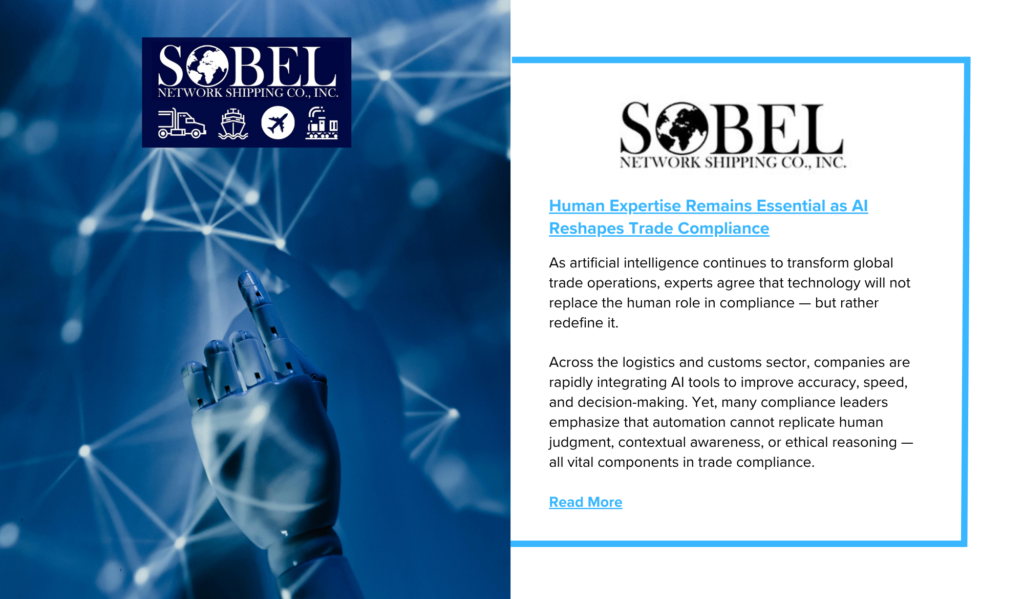As artificial intelligence continues to transform global trade operations, experts agree that technology will not replace the human role in compliance — but rather redefine it.
Across the logistics and customs sector, companies are rapidly integrating AI tools to improve accuracy, speed, and decision-making. Yet, many compliance leaders emphasize that automation cannot replicate human judgment, contextual awareness, or ethical reasoning — all vital components in trade compliance.
Balancing Automation and Judgment
While AI can interpret data, it lacks the ability to understand context — a capability that remains distinctly human. Compliance professionals are still needed to assess intent, evaluate nuanced documentation, and make informed decisions in cases where regulation and circumstance intersect.
Trade specialists note that the strength of AI lies in its capacity to manage high data volumes, flag discrepancies, and reduce repetitive administrative work. This allows compliance teams to focus on higher-level analysis, risk management, and advisory functions. In this sense, AI becomes a partner rather than a replacement.
Building a Responsible Framework for AI in Compliance
A responsible integration of AI into trade operations depends on three key principles: auditability, trust, and accountability.
-
Auditability ensures transparency in how AI arrives at conclusions — such as classification results, documentation checks, or discrepancy detection.
-
Trust grows as systems demonstrate consistent, verifiable results that align with established regulations.
-
Accountability ensures that compliance professionals remain actively involved in reviewing and validating AI decisions rather than relying on them blindly.
This framework supports a sustainable balance between automation and human oversight, minimizing errors while maintaining regulatory integrity.
From Data Entry to Strategic Advisory
The adoption of AI is driving a fundamental shift in the nature of customs and trade compliance work. The role of compliance professionals is evolving from that of document processors to trusted advisors who interpret, guide, and implement strategic compliance measures.
At the same time, government agencies are also embracing AI-driven tools to monitor patterns, identify irregularities, and enforce trade laws. This growing use of AI across both the private and public sectors is raising expectations for companies to modernize their systems and maintain compliance agility.
A Global, Integrated Approach
As multinational enterprises integrate AI across multiple jurisdictions, a unified approach to compliance is becoming essential. Experts suggest developing harmonized workflows that can operate across borders rather than maintaining separate processes for each market.
While automation improves global consistency and efficiency, it must be deployed thoughtfully — starting small, testing results, and scaling gradually.
Ultimately, AI’s true potential in trade compliance lies in its partnership with human expertise. Technology can streamline workflows and enhance decision support, but it is human judgment — shaped by experience, ethics, and contextual understanding — that ensures compliance remains responsible, adaptive, and effective.


